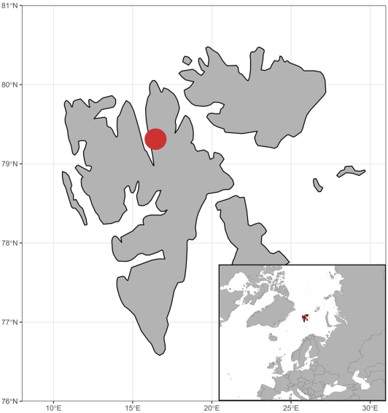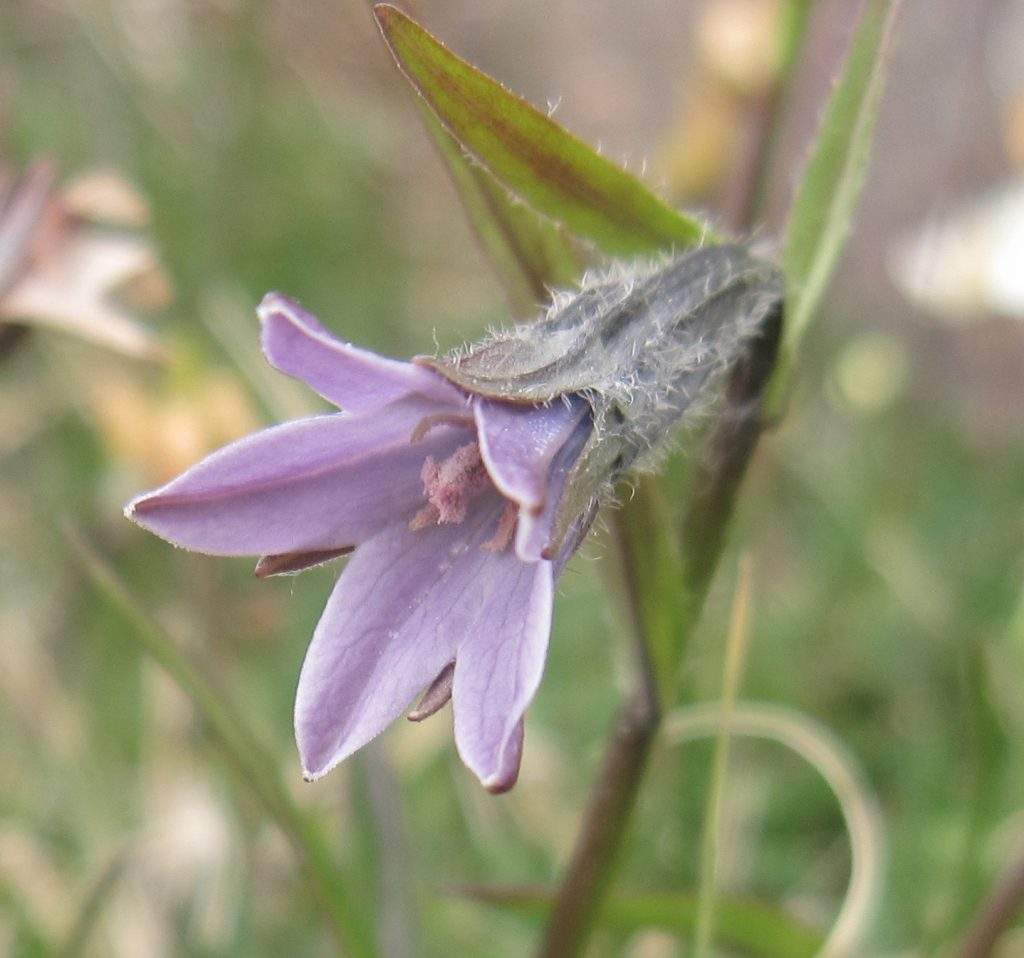DNA, like pollen, accumulate in sediments
Paleoenvironmental reconstructions have traditionally been based on fossil records and pollen sequences in lake sediments. However, in the last decades, analyses of ancient DNA and sediment DNA (sedaDNA) have become important tools to reconstruct evolutionary histories and past ecosystems. For instance, he Kap København Formation in North Greenland, dated to around two million years ago, have well-investigated macrofossil and pollen records. These rich plant and animal assemblages were revisited utilizing ancient environmental DNA (Kjær et al., 2022). This study showed an open boreal forest ecosystem with mixed vegetation of poplar, birch and thuja trees, as well as a variety of Arctic and boreal shrubs and herbs, many of which had not previously been detected in the fossil or pollen records (Kjær et al., 2022).
Extraction of DNA from sediments environmental samples can be used to study the biodiversity of past ecosystems, including extinct species and organisms that do not leave behind fossils. Just like pollen sequences in lake sediments, DNA from various species also accumulate in the sediment at the bottom of lakes. Over time, layers of sediment build-up, and the DNA from different time periods become preserved in these layers. By extracting DNA for sequencing from the layered sediments, and comparing the DNA sequences to reference databases of known plant species, the plant taxa present in each layer are identified.
Wang et al. (2021) performed a large-scale environmental DNA metagenomic study of ancient plant and mammal communities across the Arctic spanning the past 50,000 years. Their findings showed e.g. that arctic steppe vegetation was widespread during the cold and dry conditions during LGM and represented important grazing grounds for megafauna such as mammoths. However, towards the end of the last glaciation, the arctic steppe was strongly reduced due to increased levels of precipitation, creating a shift towards moisture-loving plants. Wang et al. (2021) conclude that this shift was a key factor restricting animal-distributions. They further conclude that their results do not support the hypothesis that overhunting by humans has played a significant role in the extinction of the northern megafauna.
The Holocene Climate Optimum and relict, arctic biodiversity “hotspots”
The climate continued to change rapidly in Early Holocene, which was characterized by higher temperatures than today. During the Holocene Climate Optimum (ca. 9,500 to 5,500 years ago), the Svalbard vegetation contained continuous areas with shrubs like Betula nana (Birks, 1991; Alsos et al., 2015). Today, we find remenants of this former, more thermophilous vegetation in sheltered locations with particularly good conditions. One of these areas is the Ringhorndalen-Flatørdalen area in Wijdefjorden (Fig. 2), which represents the most botanically diverse location in Svalbard today. Here we find several remarkable and isolated plant populations located far north of their normal distribution range, such as Calamagrostis purpurascens, Vaccinium uliginosum, Pinguicula alpina and Luzula spicata (Fig 3 & 4; Eidesen et al, 2013; Elvebakk & Nilsen, 2016). That the vegetation represents remnants from the Early Holocene vegetation has been supported by sedaDNA analyses of a sediment core (Voldstad et al, 2020). Ringhorndalen-Flatørdalen is an “arctic hotspot”, a concept defined as “an area within the Arctic with an extrazonally warm climate, resulting in thermophilous biodiversity elements not found in its surroundings.” (Elvebakk, 2005). Although this area seems isolated today, recent studies show that this region has been colonized from several source regions (Brožová et al. 2023).
Figure 2. Ringhorndalen-Fløtøyrdalen is located in Wijdefjorden, in the interior of Spitsbergen, and are currently the location with the highest number of registered vascular plant species in Svalbard. Many plants that are rare in Svalbard can be found here, including Campanula uniflora (above)
Photo: Pernille Bronken Eidesen
Ancient DNA informs stories of single species
Dalen et al. (2007) analyzed the genetic diversity of arctic fox populations from across their range (Fig. 1), including both modern samples and ancient DNA from bone samples dating back to the late Pleistocene, over 50,000 years ago. The ancient DNA samples showed that the genetic diversity of arctic fox populations has declined over time, with a sharp decrease in diversity around 10,000 years ago. The decline in genetic diversity could be linked to the loss of habitat towards the end of the last glaciation, and not all lineages managed to track the shift in habitat range.
Alsos, Inger Greve, Per Sjögren, Mary E. Edwards, Jon Y. Landvik, Ludovic Gielly, Matthias Forwick, Eric Coissac, Antony G. Brown, Leif V. Jakobsen, Marie K. Føreid, and Mikkel W. Pedersen. 2015. “Sedimentary ancient DNA from Lake Skartjørna, Svalbard: Assessing the resilience of arctic flora to Holocene climate change.” The Holocene 26 (4): 627-642. https://doi.org/10.1177/0959683615612563.
Birks, H.H. 1991. Holocene vegetational history and climatic change in west Spitsbergen – plant macrofossils from Skardtjønna, and Arctic lake. – The Holocene 1: 209–218.
Brožová, V., Bolstad, J. S., Seregin, A. P., & Eidesen, P. B. (2023). From everywhere all at once: Several colonization routes available to Svalbard in the early Holocene. Ecology and Evolution, 13, e9892. https://doi.org/10.1002/ece3.9892
Dalen, L., Nystrom, V., Valdiosera, C., Germonpre, M., Sablin, M., Turner, E., Angerbjorn, A., Arsuaga, J. L., & Gotherstrom, A. (2007). Ancient DNA reveals lack of postglacial habitat tracking in the arctic fox. PNAS, 104(16), 6726-6729. https://doi.org/10.1073/pnas.0701341104
Eidesen, P.B., K. Strømmen, and A. Vader. 2013. “Fjelltettegras Pinguicula alpina funnet ny for Svalbard i Ringhorndalen, Wijdefjorden, en uutforsket arktisk oase.” Blyttia 71 (4): 209 – 213.
Elvebakk, Arve. 2005. “‘Arctic hotspot complexes’ proposed priority sites for studying and monitoring effects of climatic change on arctic biodiversity.” Phytocoenologia 35 (4): 1067-1079. https://doi.org/10.1127/0340-269X/2005/0035-1067.
Elvebakk, A., & Nilsen, L. (2016). Stepperøyrkvein Calamagrostis purpurascens i Wijdefjorden på Svalbard – einaste lokalitetar i Europa. . Blyttia : Norsk botanisk forenings tidsskrift 2016, 74, 259 – 266.
Kjær, K. H., Winther Pedersen, M., De Sanctis, B., De Cahsan, B., Korneliussen, T. S., Michelsen, C. S., Sand, K. K., Jelavić, S., Ruter, A. H., Schmidt, A. M. A., Kjeldsen, K. K., Tesakov, A. S., Snowball, I., Gosse, J. C., Alsos, I. G., Wang, Y., Dockter, C., Rasmussen, M., Jørgensen, M. E., . . . PhyloNorway, C. (2022). A 2-million-year-old ecosystem in Greenland uncovered by environmental DNA. Nature, 612(7939), 283-291. https://doi.org/10.1038/s41586-022-05453-y
Voldstad, Linn H., Inger Greve Alsos, Wesley Randall Farnsworth, Peter D. Heintzman, Lena Håkansson, Sofia Elisabeth Kjellman, Alexandra Rouillard, Anders Schomacker, and Pernille Bronken Eidesen. 2020. “A complete Holocene lake sediment ancient DNA record reveals long-standing high Arctic plant diversity hotspot in northern Svalbard.” Quaternary Science Reviews 234.
Wang, Y., Pedersen, M. W., Alsos, I. G., De Sanctis, B., Racimo, F., Prohaska, A., Coissac, E., Owens, H. L., Merkel, M. K. F., Fernandez-Guerra, A., Rouillard, A., Lammers, Y., Alberti, A., Denoeud, F., Money, D., Ruter, A. H., McColl, H., Larsen, N. K., Cherezova, A. A., . . . Willerslev, E. (2021). Late Quaternary dynamics of Arctic biota from ancient environmental genomics. Nature, 600(7887), 86-92. https://doi.org/10.1038/s41586-021-04016-x











